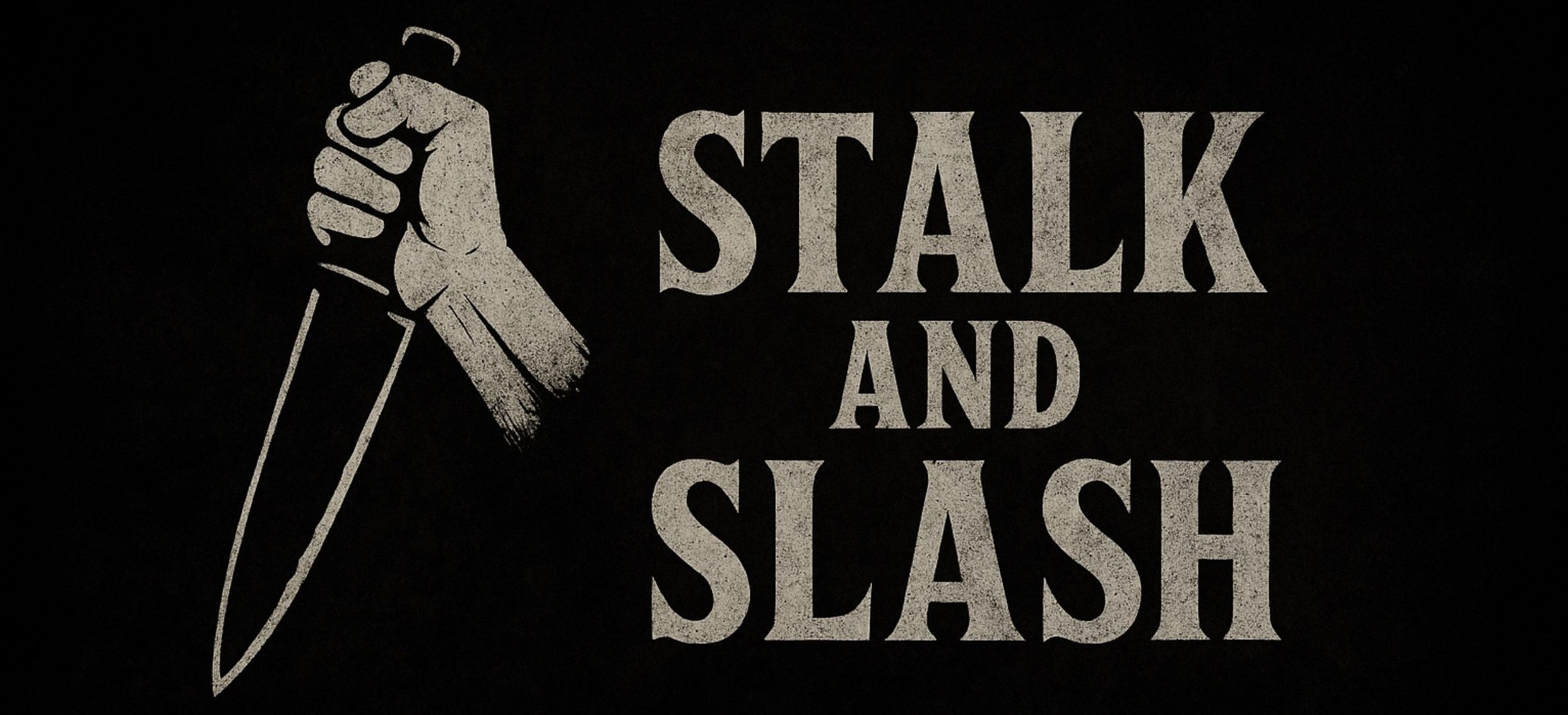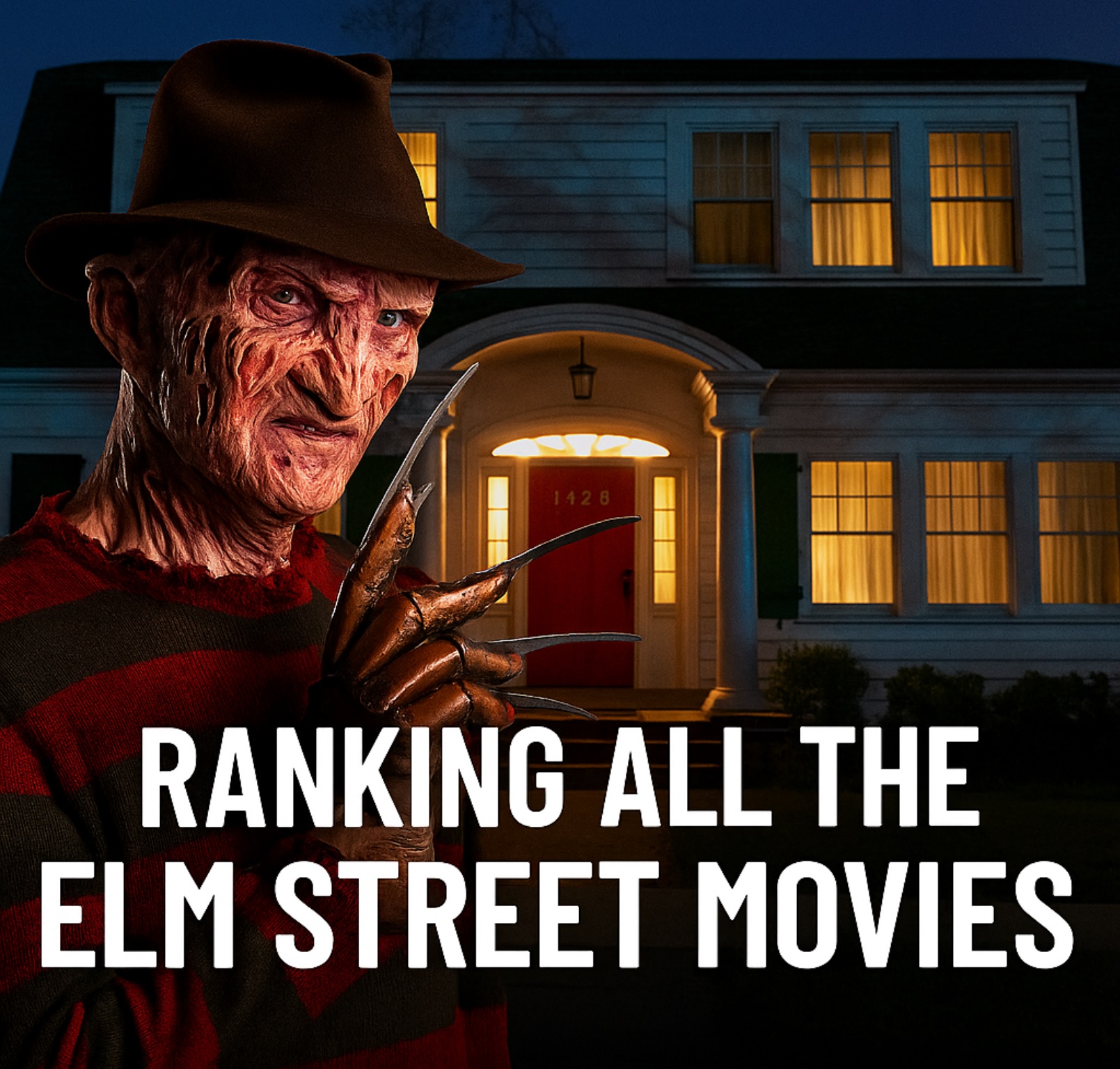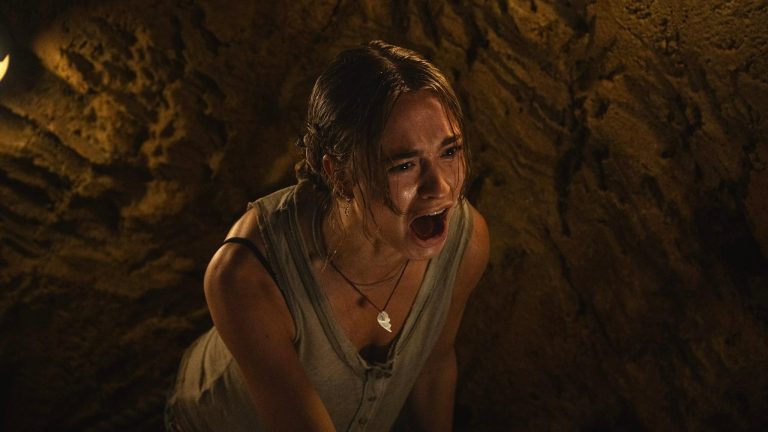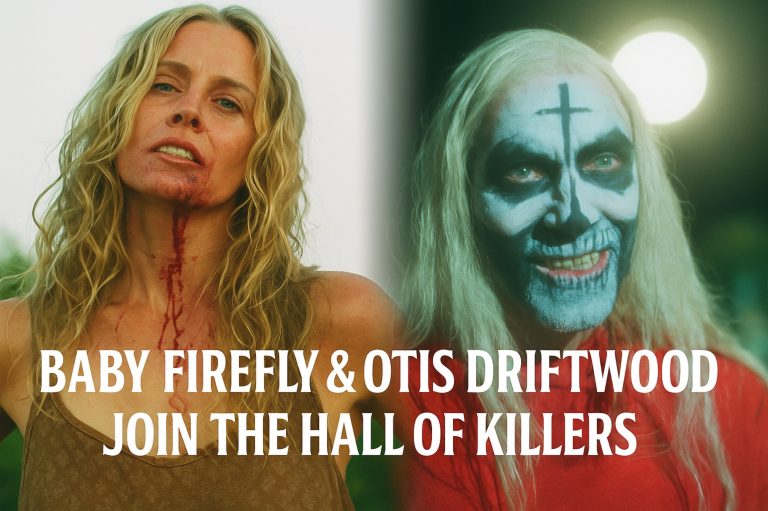Ranking the A Nightmare on Elm Street Movies from Worst to Best
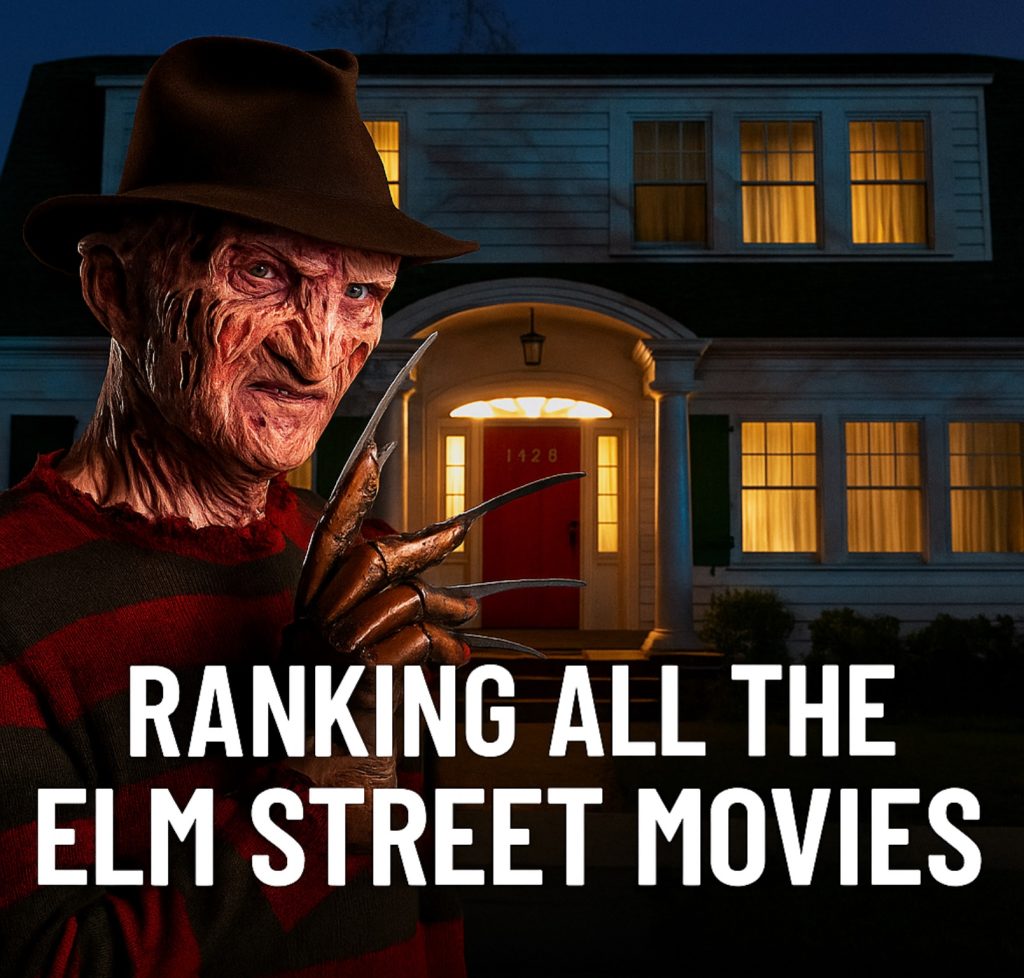
Wes Craven had already carved himself a bloody little corner of horror history before 1984 with cult nasties like The Last House on the Left and The Hills Have Eyes. But in ’84, he didn’t just knock on the door of horror immortality — he kicked it down, dragged us into our beds, and gave us A Nightmare on Elm Street. Inspired by a real-life article about a group of refugees who died mysteriously in their sleep, Craven birthed one of the most iconic movie monsters of all time: Freddy Krueger.
At first, Freddy was genuinely terrifying — a burned dream demon with a filthy fedora, a red-and-green sweater, and a glove made of blades. But, as so often happens in horror, Hollywood got greedy. By the time we were halfway through the franchise, Freddy had traded scares for stand-up, delivering punchlines instead of pure terror. We went from “Don’t fall asleep” to “Don’t laugh too hard” faster than you can say “Welcome to prime time, bitch!”.
Still, despite the increasingly absurd sequels (and we’ll get into those below), there’s no denying the cultural impact this franchise left behind. From Halloween costumes to endless parodies, from MTV appearances to crossover madness, Freddy became bigger than the films themselves. So, let’s pull up the boiler room door, grab our coffee, and rank the Nightmare on Elm Street movies from worst to best. Be warned: there will be surprises, blood, and possibly a few angry Freddy fans clawing at our door…
9. Freddy’s Dead: The Final Nightmare (1991)
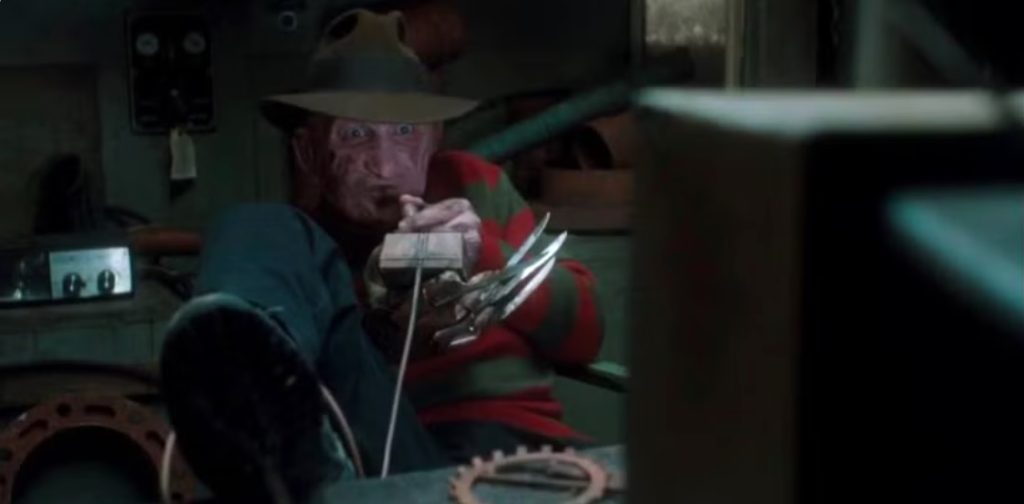
Ah, the grand finale… the Final Nightmare. New Line Cinema promised us Freddy’s epic send-off, a glorious farewell drenched in blood, terror, and maybe a little dignity. What we actually got was a bad episode of Goosebumps with a bigger budget and a pair of 3D glasses chucked in for good measure.
This was the studio’s big swing at giving Freddy a “proper ending,” and in their infinite wisdom, they handed the director’s chair to Rachel Talalay — whose previous job at New Line was literally working in the office. Office work doesn’t usually translate to cinematic greatness, and oh boy, you can tell. The movie tries to expand Freddy’s lore in bizarre ways, dropping the bombshell that Krueger has a secret kid (because apparently, nothing screams “nightmare fuel” like Freddy as a family man). The entire plot revolves around the mystery of which teen is Freddy’s little bundle of burnt joy, and honestly, by the halfway point, you’re too busy wondering why you’re still watching to care.
Then there’s Springwood itself, now apparently a ghost town populated entirely by deranged adults, including a baffling cameo from Roseanne and Tom Arnold, because… why not? We also get “innovative” dream sequences, like the infamous Freddy-as-video-game-boss kill, which would’ve been edgy in 1991… if Super Mario Bros. didn’t exist. And let’s not forget the much-hyped 3D finale — New Line made a massive deal about it, only to give us about three minutes of headache-inducing gimmickry before the credits rolled. Freddy’s big death moment lands with all the impact of a wet fart, and instead of tears, fans were left questioning their life choices.
After this catastrophe, Freddy deserved a long nap — and he got one. It would take years before the razor glove returned, and honestly, we all needed the break. As a send-off, Freddy’s Dead is a disaster. As a piece of unintentional comedy? …Still pretty bad.
8. A Nightmare on Elm Street 5: The Dream Child (1989)
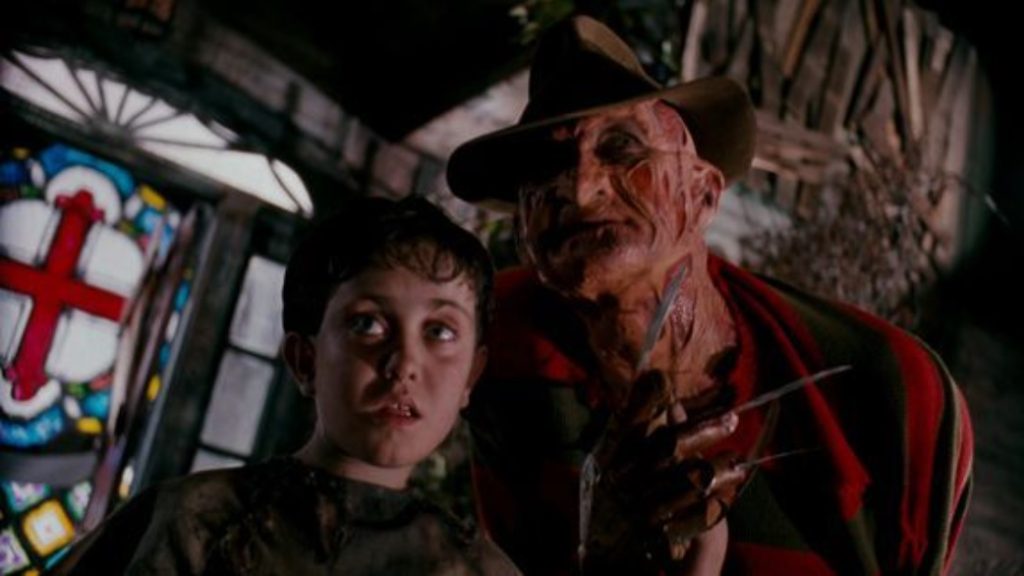
By the time The Dream Child crawled out of the boiler room, the Nightmare franchise had already started trading terror for terrible one-liners — but this is the film where Freddy officially stopped being the “stuff of nightmares” and became a bad open-mic comedian with a glove. If you thought a dream demon invading your sleep was scary, wait until you meet dad bod Freddy trying to be reborn through an unborn fetus. Yes, that’s actually the plot.
Following the events of Dream Master, our returning heroine Alice (Lisa Wilcox) discovers she’s pregnant, and Freddy, never one to respect personal boundaries, decides to hijack the kid’s dreams to worm his way back into the real world. That’s not just insane, that’s several therapy sessions worth of insane. But wait — it gets weirder! We also get a deep dive into Freddy’s “tragic” origin story: turns out he’s the product of his mother, a nun, being trapped in an asylum and… well… “assaulted by 100 maniacs.” Subtle, huh? It’s like the film wants to be edgy and sympathetic at the same time but ends up face-planting in the shallow end of bad taste.
Everything here is cranked up to “what were they thinking” levels. The acting? Wooden. The pacing? Non-existent. The plot? A confusing mess that spends more time with bizarre dream sequences than actual scares. And Freddy himself? Oh, he’s having the time of his life — dropping one embarrassing pun after another like a burnt dad at a barbecue. The kills should be the saving grace, and yes, a few are decently creative (the comic book death, for example, is cool in concept), but they’re buried under a mountain of tonal whiplash and MTV-style camera tricks that feel more dated than Freddy’s jumper.
If you came to Dream Child hoping for horror, prepare to be disappointed. If you came hoping for an unhinged fever dream of Freddy stalking fetuses while spitting zingers like a demonic Chandler Bing… well, you’re in luck. But for the rest of us, this one’s just another nail in the franchise’s increasingly crowded coffin.
7. A Nightmare on Elm Street (2010)
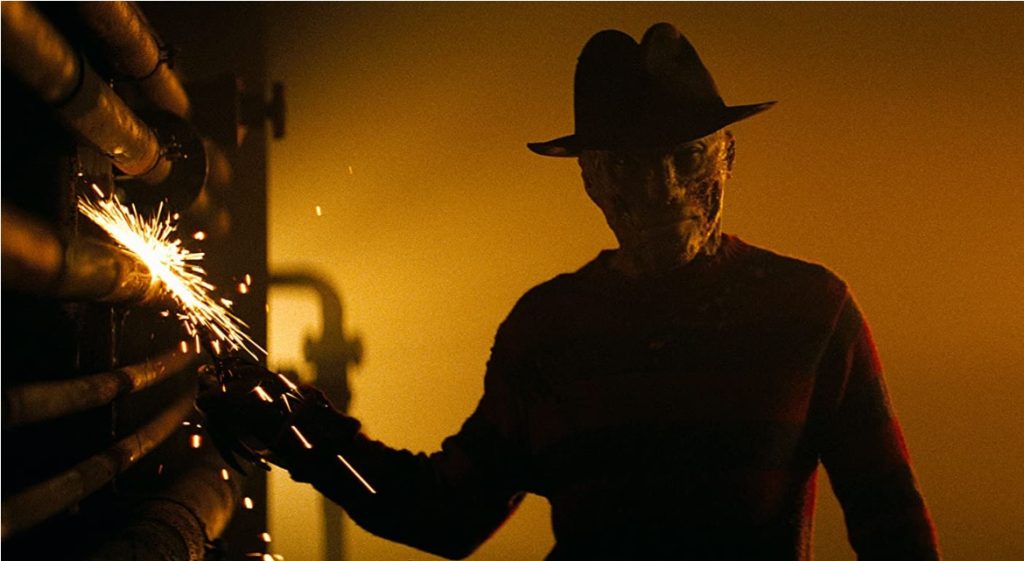
Ah, the remake. The film that dared to ask, “What if Freddy Krueger wasn’t a wisecracking horror icon, but a dead-serious trauma machine who makes you want to curl into a ball instead of laugh?” On paper, this should’ve worked. Robert Englund, the one true glove-wielding dream demon, had hung up the fedora, so Platinum Dunes (Michael Bay’s production company, which should tell you everything) decided to reboot the franchise for a new generation. Enter Jackie Earle Haley, a phenomenal actor (Watchmen, Little Children) who gives the role his all… but here’s the problem: he’s not Freddy. He’s a great something, but he’s not Freddy Krueger.
This remake strips away the goofy one-liners and cartoonish kills of the later sequels, opting for a darker, grittier, and far more disturbing tone. In theory, that sounds like a return to form — no more stand-up-comedy Freddy, just pure nightmare. But the execution? Flat. The scares rarely land, the pacing crawls, and the CGI-heavy dream sequences lack the surreal charm that made the original terrifying. Even with a solid cast, including a pre-Girl with the Dragon Tattoo Rooney Mara as Nancy, the film never finds its rhythm. And for a movie so focused on being “serious,” it somehow manages to be strangely joyless and lifeless at the same time.
The biggest tragedy here isn’t that the remake is bad, it’s that it’s mediocre. It’s not offensively awful like Freddy’s Dead or Dream Child, but it also doesn’t carve out any new identity for itself. The tone is so relentlessly grim that it loses the fun energy that defined the franchise in its heyday. And while Haley tries to make Freddy his own, the redesign makes him look more like a hairless mole rat than the dream-haunting boogeyman we all love to fear.
This movie didn’t just fail to reboot the franchise, it buried it. The box office underperformed, critics shredded it, and Freddy’s glove went back into storage where it’s stayed for over a decade. In a way, this film feels like its own nightmare: the kind where you wake up halfway through, groan, and decide to go back to sleep instead.
6. Freddy vs. Jason (2003)
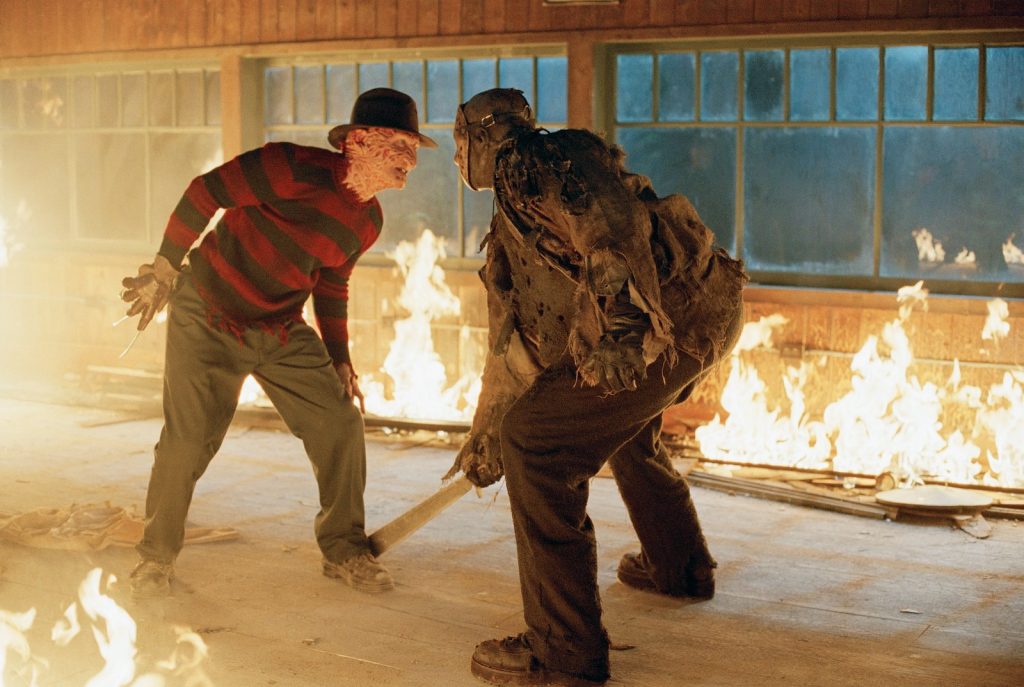
When Freddy’s glove burst out of the dirt at the end of Jason Goes to Hell (1993) and dragged Jason’s hockey mask into the abyss, horror fans collectively lost their minds. Two slasher icons — the dream-stalking wisecracker and the silent machete-swinging mummy’s boy — finally crossing paths? It was the Avengers: Endgame of early-2000s horror, minus the spandex and CGI portals. And after a full decade of rumours, rewrites, and delays, Freddy vs. Jason finally landed in 2003.
Here’s the shocker: it’s actually fun. Against all odds, this thing works better than it has any right to. The plot is bananas; Freddy’s been weakened because the kids of Springwood have forgotten about him, so he manipulates Jason into hacking up horny teens in the hope it’ll reignite fear and bring him back to full strength. But, as anyone who’s seen a Friday the 13th movie knows, Jason doesn’t really “do teamwork,” so naturally the two horror titans end up having a full-blown WWE-style deathmatch in the final act. There are insane kills, blood fountains, a cameo from Destiny’s Child alum Kelly Rowland (whose face-off with Freddy leads to… let’s call it the line of the movie), and enough chaotic energy to fuel a thousand Hot Topic T-shirts.
The ending? Oh, the ending has sparked twenty years of arguments at horror conventions, online forums, and probably even family dinners. Jason technically decapitates Freddy, clean slice, head off, job done, but Freddy gives the camera a cheeky little wink as his head’s being carried off. So… did Freddy actually lose? Is Jason trapped in a dream? Or is it just sequel-bait that never paid off? We’ll probably never know, because despite the film’s massive success (it made more money than any previous Elm Street or Friday entry), a follow-up never happened.
And that’s the biggest tragedy here: we were this close to a cinematic bloodbath of epic proportions. Freddy vs. Jason vs. Ash from Evil Dead was rumoured, as were insane pitches involving Michael Myers and even Pinhead. But Hollywood did what Hollywood does best — buried potential gold under “creative differences” and legal red tape.
Still, Freddy vs. Jason is gloriously dumb, shamelessly over-the-top, and one of the most purely entertaining slashers of the 2000s. Does it make sense? Absolutely not. Is it good? Debatable. Is it fun? Hell yes.
5. A Nightmare on Elm Street 4: The Dream Master (1988)
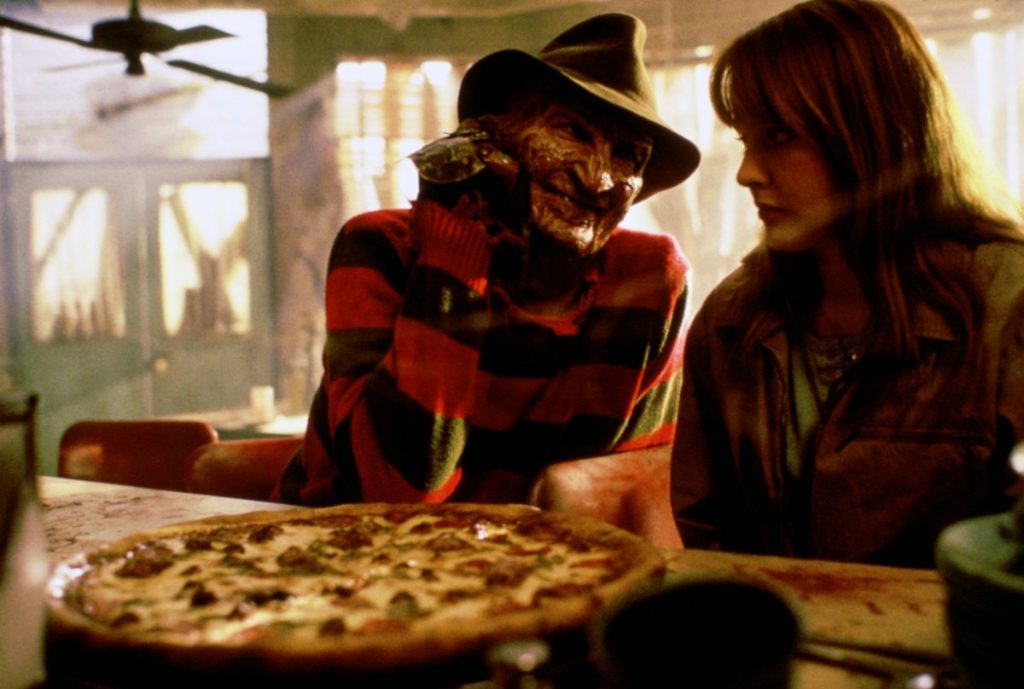
After the glorious chaos of Dream Warriors (1987), hopes were sky-high for Freddy’s next outing. Fans wanted bigger kills, wilder dreams, and more Krueger carnage. What we got instead… well, it’s complicated. Dream Master isn’t terrible, in fact, compared to Dream Child (ugh), it’s practically Citizen Kane. But when stacked against its immediate predecessor, it falls flat like a mattress in Springwood without any screaming teens to land on it.
The trouble starts early with a major casting shakeup: Patricia Arquette, who everyone loved as Kristen Parker in Dream Warriors, refused to return, so the role went to Tuesday Knight — who, to her credit, at least gifts us the catchy opening song. Unfortunately, Tuesday doesn’t have Arquette’s charm or emotional weight, and it’s hard not to notice the downgrade. Kristen’s back with her dream-hopping powers, but don’t get too attached, Freddy wastes no time sending her to the boiler room in the sky, passing her abilities to newcomer Alice (Lisa Wilcox), who suddenly finds herself becoming the “Dream Master” and Freddy’s next plaything.
Here’s where things get weird… and really campy. Freddy fully transitions from terrifying dream demon to part-time stand-up comic. The kills? Utterly bizarre. We get death by pizza (yes, seriously), a girl who literally turns into a cockroach mid-dream, someone crushed in a weightlifting nightmare, and a surreal sequence that feels like Looney Tunes directed by a sleep-deprived David Lynch. Robert Englund, as always, seems to be having the time of his life, but Freddy’s shift into full-on clown territory takes away a lot of the menace that made him scary in the first place.
That said, there’s fun to be had here if you lean into the absurdity. The visuals are stylish, the soundtrack absolutely slaps, and Renny Harlin’s direction keeps the pacing fast enough that you don’t really have time to question the plot holes, of which there are many. Still, after Dream Warriors raised the bar, Dream Master stumbles trying to vault it. A middle-of-the-road Freddy flick: not a total nightmare, but nowhere near the dream it could’ve been.
4. A Nightmare on Elm Street 2: Freddy’s Revenge (1985)
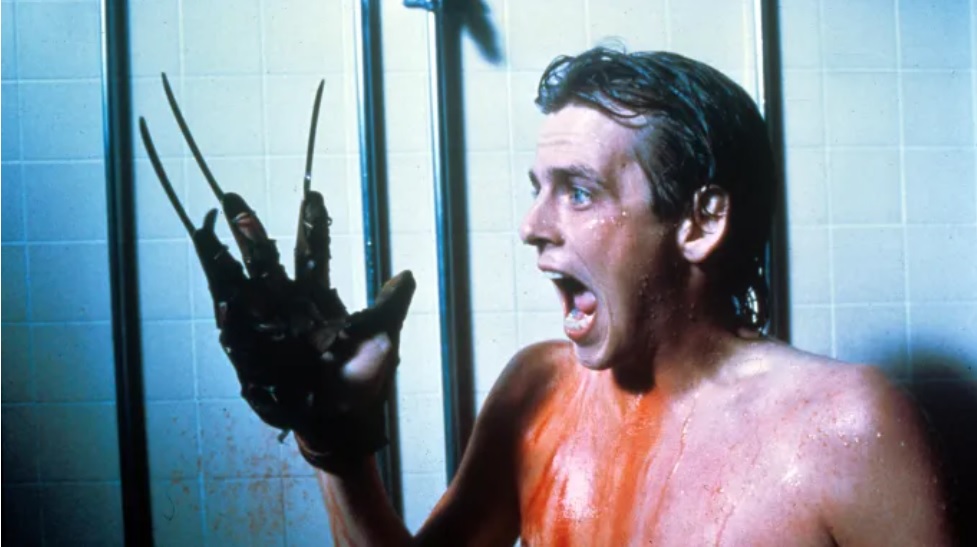
After the massive success of the first film, New Line wasted no time rushing out a sequel — because, let’s face it, Hollywood loves to milk a fresh corpse while it’s still warm. The result? One of the strangest, most divisive horror sequels ever made. It kicks off promisingly with an iconic, genuinely creepy school bus nightmare sequence that perfectly captures the surreal terror of Freddy’s world… and then the movie swerves hard into what-the-hell territory faster than you can say “Elm Street canon.”
First, the rules go completely out the window. In the original, Wes Craven established that Freddy could only attack you in your dreams. Logical. Terrifying. Makes sense. Here? Nope! Freddy apparently decides he’s bored with Dreamland and just waltzes into the real world like a crispy chainsmoking uncle, crashing pool parties and slaughtering teenagers in broad daylight. There’s even a scene where he bursts out of a poor guy’s body like a nightmarish chest-bursting condom malfunction — which, credit where it’s due, is a gnarly practical effect, but narratively… it’s nonsense.
Then there’s the infamous homoerotic subtext — or, as some would argue, not-so-subtext. The movie is packed with themes of sexual repression, identity, and sweaty tension between our protagonist Jesse (Mark Patton) and his frenemy Grady. There’s also a gym teacher death scene involving bondage gear, a steamy shower, and Freddy whipping him to death. Subtlety, thy name is not Freddy’s Revenge. To this day, the film has a massive cult following in the LGBTQ+ horror community, with Mark Patton later dubbing himself the first “male scream queen.” But at the time? Fans were… confused. And a little traumatized.
That’s not to say the movie’s all bad. Robert Englund still brings the menace, and when it leans into the surreal dream logic, there are some fantastic visuals. But compared to its predecessor, it’s a chaotic mess. It ignores established rules, swings wildly between tones, and ultimately leaves you wondering if the script was finished five minutes before filming started. Still, love it or hate it, Freddy’s Revenge is unforgettable — and in a franchise this long, that counts for something.
3. Wes Craven’s New Nightmare (1994)
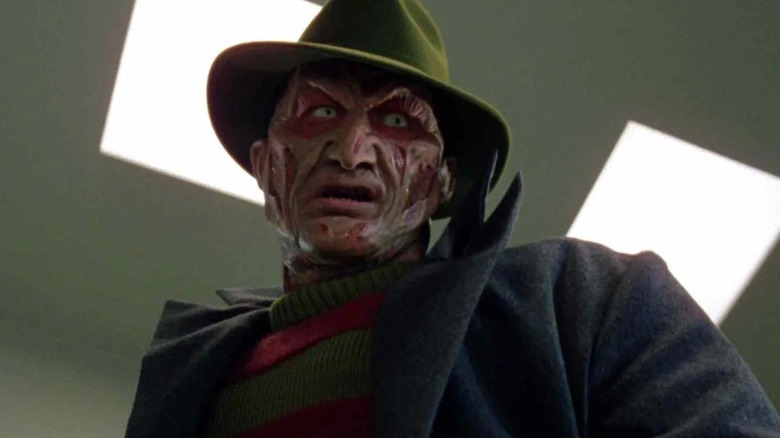
Before Wes Craven gave us Scream and officially broke the fourth wall into a million bloody pieces, he tested the waters with New Nightmare — a bold, bizarre, and surprisingly clever experiment that dragged Freddy kicking and screaming into the real world… kind of. After the absolute dumpster fire that was Freddy’s Dead, Craven decided it was time to reinvent the franchise, and what better way than making a movie about the making of a Freddy movie?
The setup is genius: the original Elm Street cast and crew — including Heather Langenkamp, Robert Englund, John Saxon, and even Craven himself — play fictionalized versions of themselves. But here’s the twist: a demonic entity has latched onto the Freddy Krueger persona and is using it as a vessel to enter our world. Cue Heather, once again shoved into “final girl” mode, as she battles to protect her creepy son (played by a pre-Pet Sematary Two Miko Hughes) from a more sinister, darker version of Freddy. Gone are the bad puns and slapstick gags — this Freddy is genuinely menacing again, with a revamped design featuring a more organic, bone-like glove and a nastier edge.
Was it a box office smash? Nope. Audiences in 1994 didn’t quite know what to make of it, and the meta-concept flew over many heads. But in hindsight, New Nightmare was ahead of its time and laid the groundwork for what Craven would perfect two years later with Scream. It’s tense, creative, and refreshingly different after a string of increasingly ridiculous sequels. Plus, watching Robert Englund play himself and Freddy is pure gold — talk about double pay cheques. If you’ve skipped this one thinking it’s just another tired sequel, do yourself a favour and revisit it. Freddy gets his edge back here… right before he loses it again to Jason.
2. A Nightmare on Elm Street 3: Dream Warriors (1987)
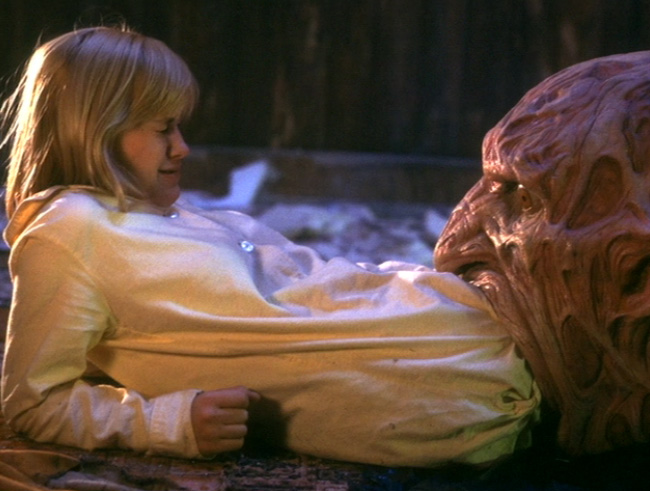
After the bleak terror of the original and the absolute… “choices” made in Freddy’s Revenge, Wes Craven came back to co-write Dream Warriors and gave Freddy the ultimate glow-up. Gone was the confused tone of Part 2; this time, we got a perfect blend of gory horror, ridiculous fantasy, and some of Freddy’s most iconic kills ever.
The setup? A group of teenagers — including a young Patricia Arquette in her breakout role as Kristen Parker — are locked inside a psychiatric hospital because they’re terrified to fall asleep. Of course, the adults are useless and dismissive (“Nightmares can’t kill you, sweetie!” — sure, Jan), except for one new therapist who actually gets it: Nancy Thompson, returning from the original, now working to help the next generation of Springwood teens survive. But Freddy’s back in their dreams, nastier than ever… and this time, the kids decide to fight back.
And fight back they do — in style. Inside their dreams, they become their “best selves,” turning into wizards, martial artists, punk-rock badasses, and weightlifting warriors, which sounds ridiculous on paper… and honestly, it is. But it works. Meanwhile, Freddy unleashes some of his most iconic nightmare fuel: the giant phallic snake swallowing Kristen whole, the gruesome puppet sequence where Freddy rips out a kid’s veins and uses him like a marionette, and the infamous topless nurse seduction scene — which, let’s be honest, probably caused more VHS tape rewinds in the late ’80s than Top Gun.
Dream Warriors brought the franchise roaring back to life, striking a balance between fun and frights while cementing Freddy as a pop-culture icon. It’s gory, imaginative, endlessly quotable, and just the right amount of unhinged. Plus, we got Dokken’s glorious metal anthem “Dream Warriors” blasting over the credits — and if you haven’t air-guitared to that, are you even living?
1. A Nightmare on Elm Street (1984)
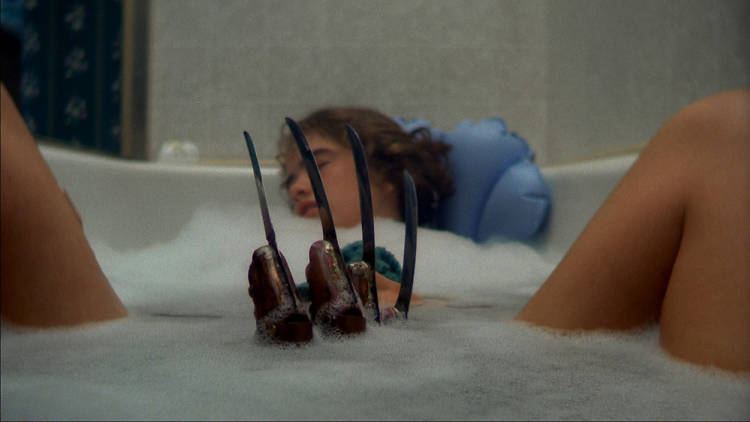
The one. The only. The daddy of dream demons. Wes Craven’s A Nightmare on Elm Street isn’t just the best film in the franchise — it’s one of the most important horror movies ever made. Full stop. Without this film, New Line Cinema would’ve been just another forgotten indie studio; instead, Freddy Krueger came along, slashed a few teenagers, and single-handedly built “The House That Freddy Built.”
We follow Nancy Thompson, played perfectly by Heather Langenkamp, as she starts having terrifying nightmares about a horribly burned man in a fedora wielding a glove of razor-sharp knives. Weirdly, her best friend Tina and boyfriend Glen (baby-faced Johnny Depp in his debut role, bless him) are having the exact same dreams. And because this is a horror movie, things escalate quickly — Freddy doesn’t just haunt your dreams; he kills you in them. That means if you die in the dream, you die in real life… and Tina’s infamous death scene proves it in one of the greatest kills in slasher history.
Speaking of iconic moments, Glen’s blood fountain bed death? Still jaw-dropping. One second Depp’s having a cheeky nap, the next he’s being violently pureed into a geyser of gore that could fill an Olympic swimming pool. These kills set the tone for an entire generation of slashers, showing horror could be brutal, creative, and stylish all at once. And then there’s Robert Englund’s Freddy — sinister, sadistic, and genuinely terrifying here before the sequels turned him into a wisecracking Saturday morning cartoon villain.
Nearly 41 years later, A Nightmare on Elm Street remains an untouchable classic. The dream-logic scares, Charles Bernstein’s eerie score, Freddy’s unforgettable design — everything about it is burned (pun intended) into horror history. Wes Craven didn’t just create a slasher film; he created a mythology, a horror lullaby, and one of the most enduring villains ever. Even today, you only have to hum “One, two, Freddy’s coming for you…” and watch entire rooms shiver.
This isn’t just the franchise’s peak. It’s one of horror cinema’s defining masterpieces. Freddy came for our dreams… and he never really left.
